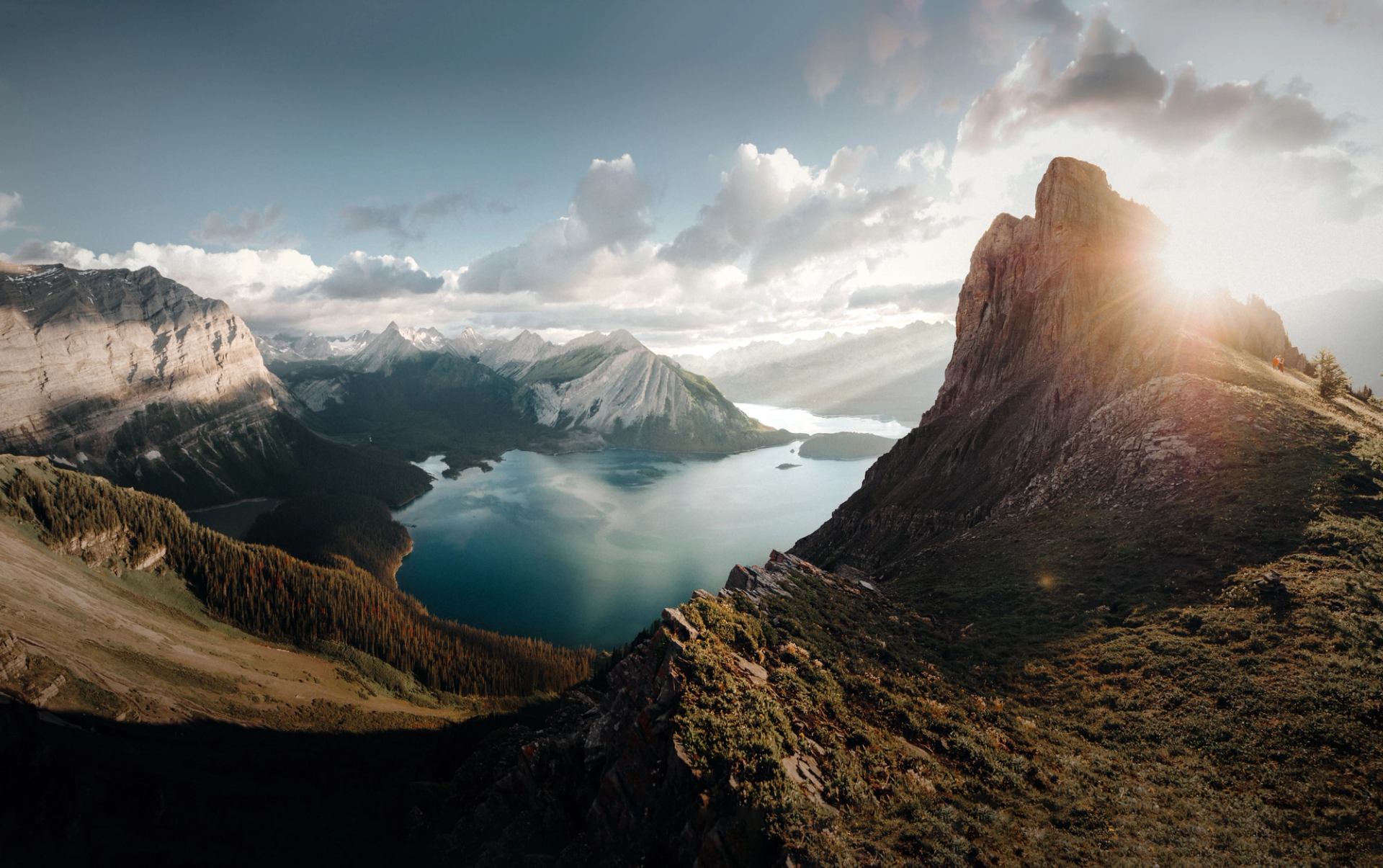Visa & eTA requirements
Before coming to Canada, check the Government of Canada’s website to see if you need a visa. Most international citizens can enter Canada as tourists but need an Electronic Travel Authorization (eTA).
An eTA is an entry requirement for visa-exempt foreign nationals flying to or transiting through a Canadian airport. Visit the Government of Canada website to apply—applications are typically approved within minutes but can take several days to process if you’re asked to submit supporting documents.
Make sure your passport is valid for at least six months after your planned departure date from Canada. It’s best to keep travel and accommodation booking details on hand for customs.
Always check for visa and travel updates on the official Canadian immigration website or at your nearest embassy or consulate.
Flights & transportation
We have two major international airports: Calgary International Airport (YYC) and Edmonton International Airport (YEG). On your way to Alberta, you may have to connect through a major hub like Toronto or Vancouver. After landing, you can reach your accommodations by taxi, shuttle bus or rental car. Some hotels offer airport services, so be sure to ask when booking your stay.
Accommodation
It’s best to book hotels, Airbnbs and hostels in advance to help find better rates and ensure availability. Accommodation in popular areas like Banff or Lake Louise can fill up quickly. Alberta may be bigger than you think. Consider the distance of your accommodation from the attractions/areas you want to see.
Payments & currency exchange
Most places in Alberta accept international credit or debit cards. Be sure to inform your bank about your travel dates to avoid issues with your cards. You can exchange currency at the airport or use local ATMs to withdraw Canadian dollars for a small fee. Keep in mind exchange rates and ATM fees at airports are often more expensive.Tax rates: Alberta is the only Canadian province without a provincial sales tax (PST), but our province does have a 5% goods and services tax (GST) on most purchases.
Travelling in Alberta
Our major cities have efficient public transit systems. From Calgary and Edmonton, you can purchase a bus ticket to Banff or Jasper National Parks, Canmore, and certain towns around the province. For more remote locations, like our rural areas, we recommend renting a car for convenience and flexibility.
If you’re driving in Alberta, make sure you have a valid driver’s license and rent a car early. International travellers typically need an International Driving Permit (IDP) or a valid home-country driver’s license.
If you don’t want to drive but want to make the most of your visit, join a guided tour for attractions like the Icefields Parkway or activities like downhill skiing and wildlife viewing. Many tour operators cater to international tourists with language guides.
With shuttles, buses, bike rentals and more transportation options, travelling sustainably in Alberta is easier now than ever. If you drive, consider leaving your vehicle at your accommodation and taking public transportation or shuttles to make your way around.

When to visit
Alberta turns into a wonderland once snow starts falling. We have world-class ski resorts in Banff, Lake Louise and Jasper, and unique activities like dogsledding and ice climbing. This is also the best time for stargazing and chasing the northern lights.
Alberta is Canada’s sunniest province. Summer is ideal for road trips, patio lunches, festivals, rodeos and countless outdoor activities like paddling, golfing and rock climbing. This is peak tourist season, so expect more crowds.
The fall colours are beautiful, and the weather is still mild for outdoor activities. For a few weeks, coniferous larch trees turn gold in the Rockies and make for a remarkable hiking backdrop. Autumn has fewer tourists, so it’s a great time for a quieter experience.
This season is stunning and rife with adventure. As the weather warms up, wildflowers bloom and wildlife becomes more playful. You can hit the mountains for sunny spring skiing in the morning and then go biking in the afternoon.
Year-round
Our weather changes quickly at any time of year, especially in the Canadian Rockies. Dress in layers, wear proper footwear for planned activities and don’t forget sunscreen, sunglasses and a hat for UV protection, even during winter.
Winter
In our coldest months, January and February, temperatures range from -5° to -15°C (23° to 5°F). They can drop as low as -30° to -40°C (-22° to -40°F) for short periods. Be sure to bring insulated clothing, gloves and boots.
Summer
July and August are usually the warmest months of the year. Our average temperature is 20° to 25°C (68° to 77°F), but it’s not uncommon for temperatures to go above 30°C (86°F). Evenings can cool down quickly, so bring a light jacket or sweater just in case.
Local etiquette & customs
Canadians are known for their friendliness. A simple “Please” and “Thank you” goes a long way.
Tipping is customary in Canada, especially in restaurants and bars and for services like taxis. A standard tip is about 15-20% of the pre-tax bill.
When visiting national parks, follow all signs and stay on marked trails to protect the environment. And no matter where you are, hold onto recycling and garbage until you can discard it in the proper bin.
Alberta has ample wildlife, such as moose, bears and mountain goats. Keep safe distances from all wild animals and never try to feed them. Travellers going to Banff or Jasper, especially to camp or hike, should consider joining a wildlife safety education program. You can find these programs online, in major cities and national parks.
Itinerary inspiration
With so much to see and do, it can be hard to know where to start. Take a look at our Alberta vacation ideas and see what activities and sights call to you.
